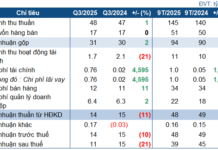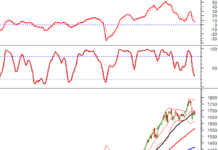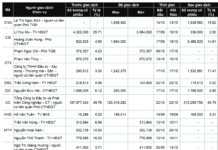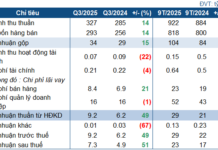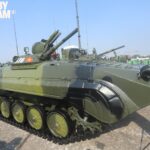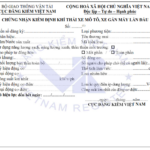Proud of Vietnam’s Indigenous Infantry Fighting Vehicle, the XCB-01
The XCB-01, Vietnam’s indigenous infantry fighting vehicle (IFV), took center stage at the 2024 Vietnam International Defense Exhibition, reflecting the country’s significant advancements in defense capabilities. The XCB-01 not only made its debut at the exhibition but also participated in the 12th Army Corps’ drill in late 2023, and it is currently being manufactured at the Z189 Shipyard in Haiphong.
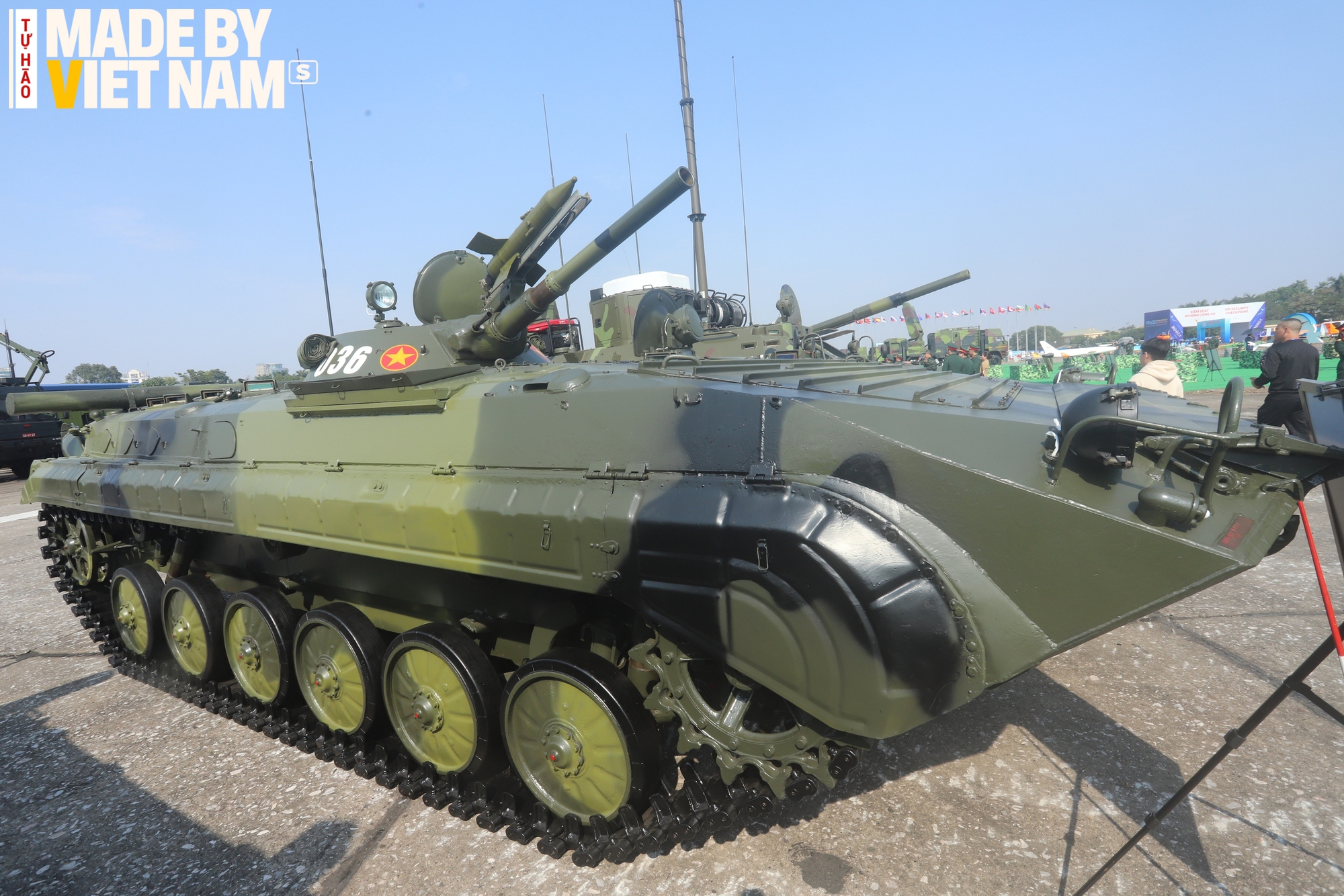
The XCB-01 on display at the 2024 Vietnam International Defense Exhibition. Photo: Thien Son
This IFV marks the beginning of Vietnam’s domestic production of tracked armored vehicles, weighing approximately 15 tons. It boasts modern technical features with a length of 6.95m, a width of 3.25m, and a height of 2.14m, excluding the elevation of the main gun.
Equipped with a flexible track system and operated by a crew of three, the XCB-01 also features advanced laser sensors, enabling quick detection and response to threats from artillery, missiles, or UAVs.
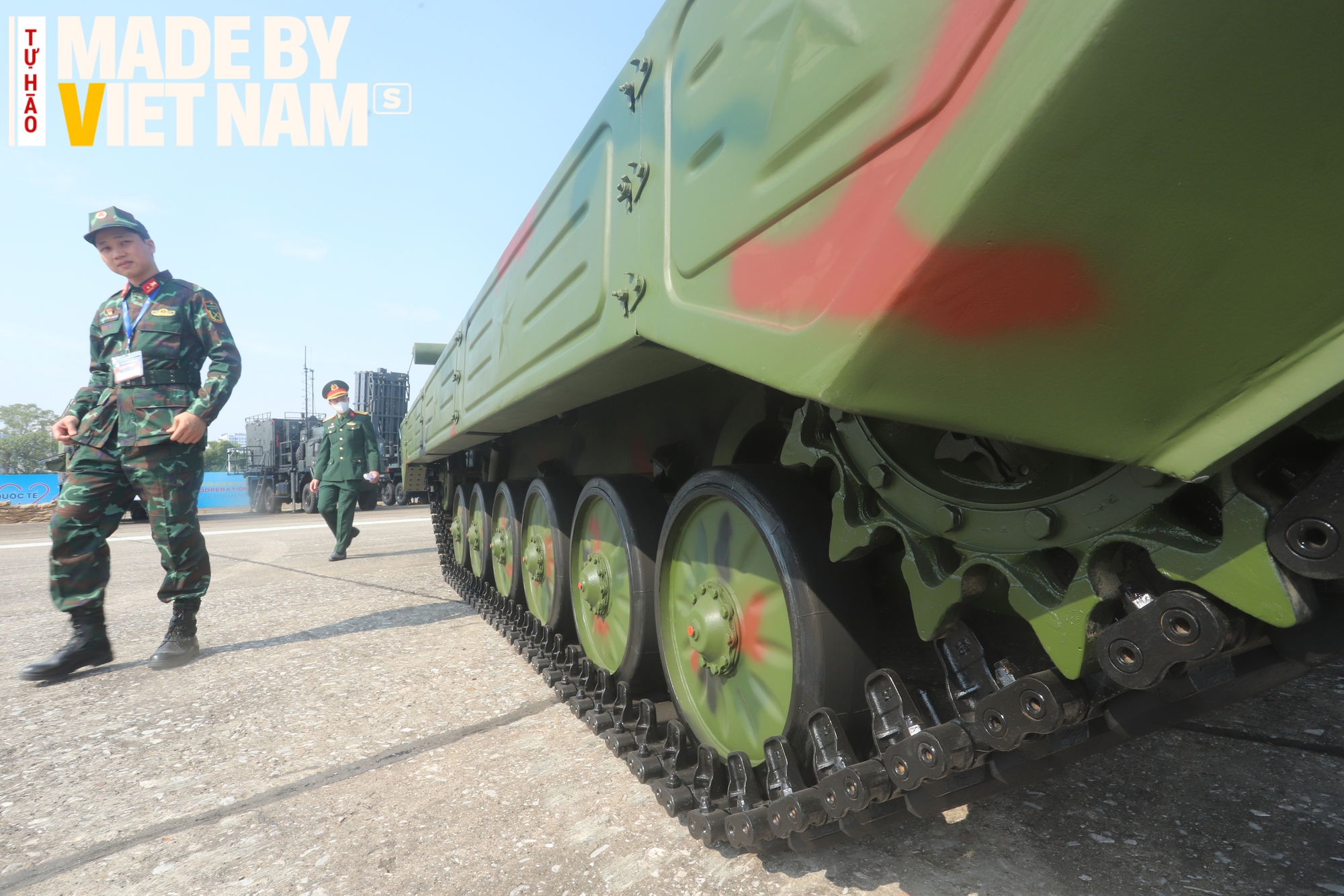
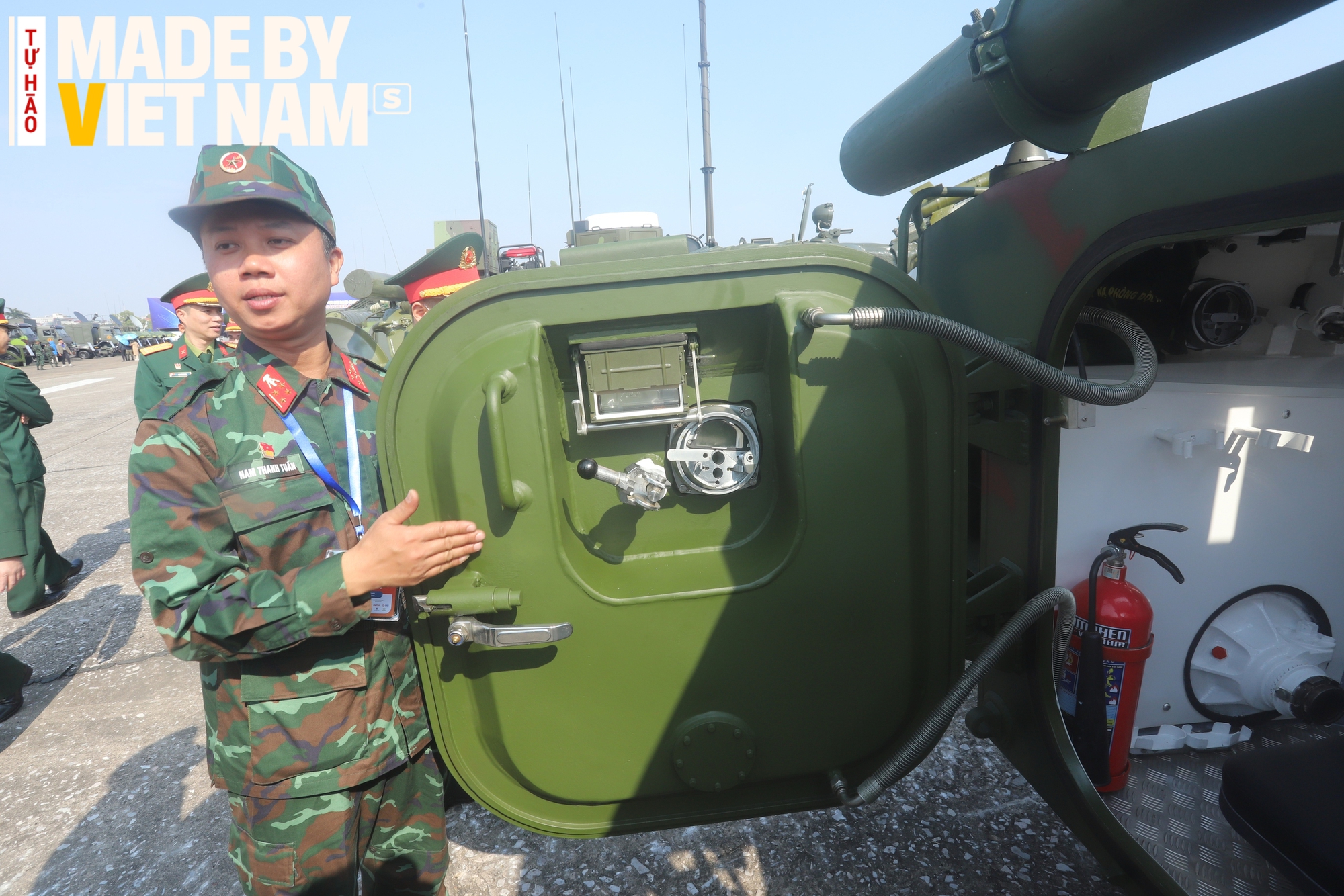
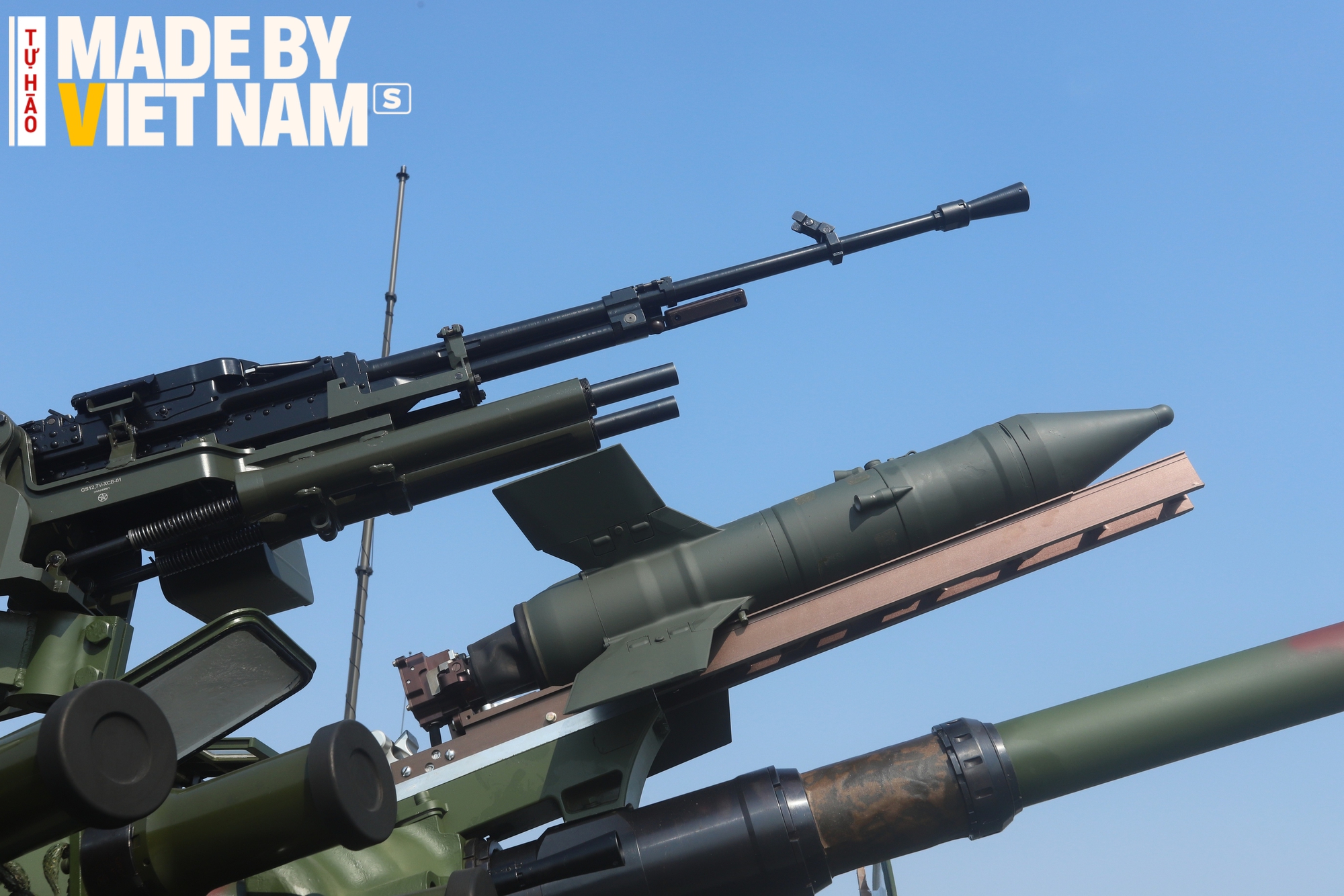
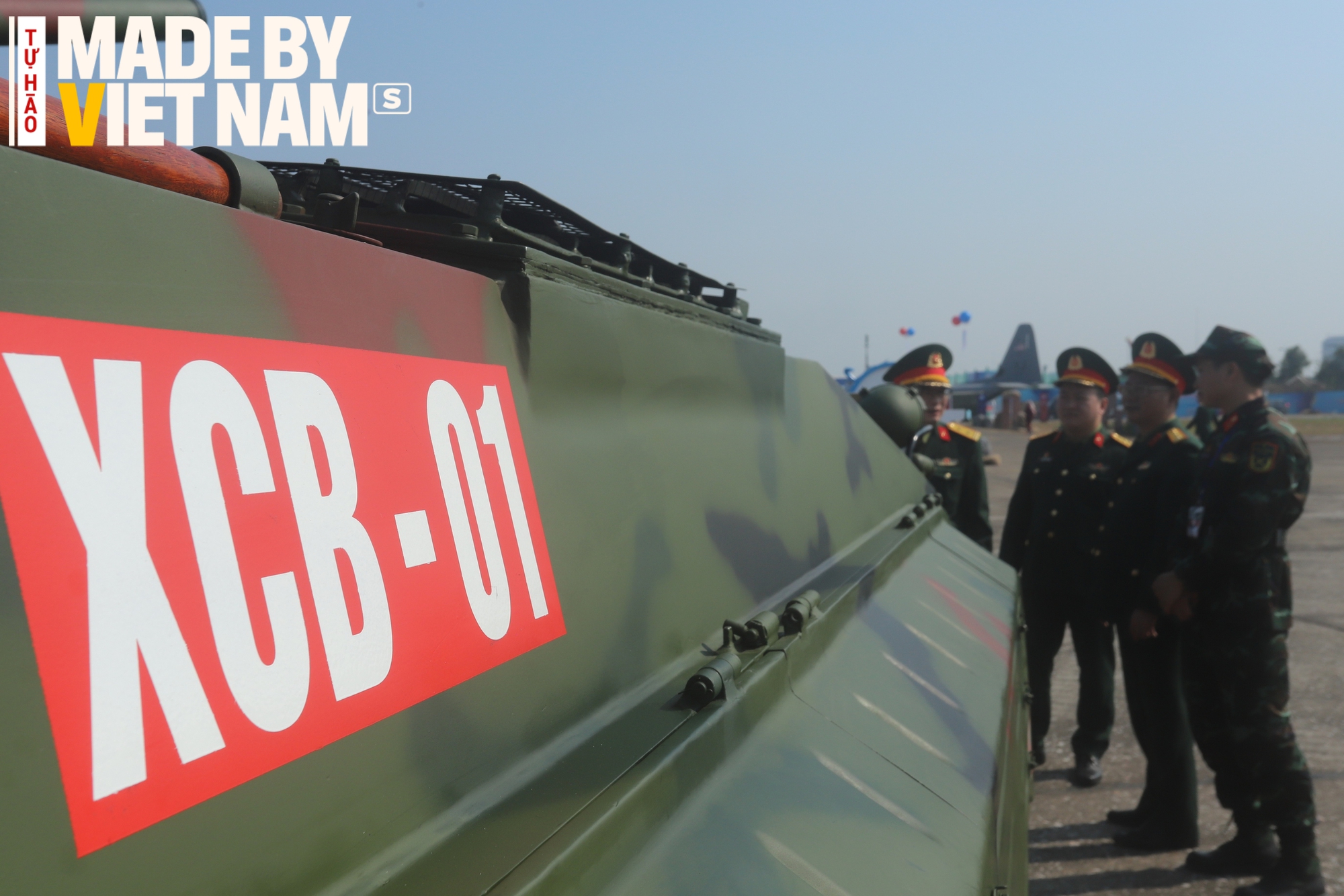
Close-up of the XCB-01’s details. Photo: Thien Son
The XCB-01’s combat suite includes a 73mm main gun with a semi-automatic loading system, a coaxial machine gun, and an anti-aircraft machine gun, delivering formidable firepower against enemy infantry.
Additionally, with a maximum speed of 65 km/h and a swimming speed of 7 km/h, along with a 300-horsepower diesel engine and a suspension system capable of traversing diverse terrain, the XCB-01 is a formidable opponent on the battlefield.
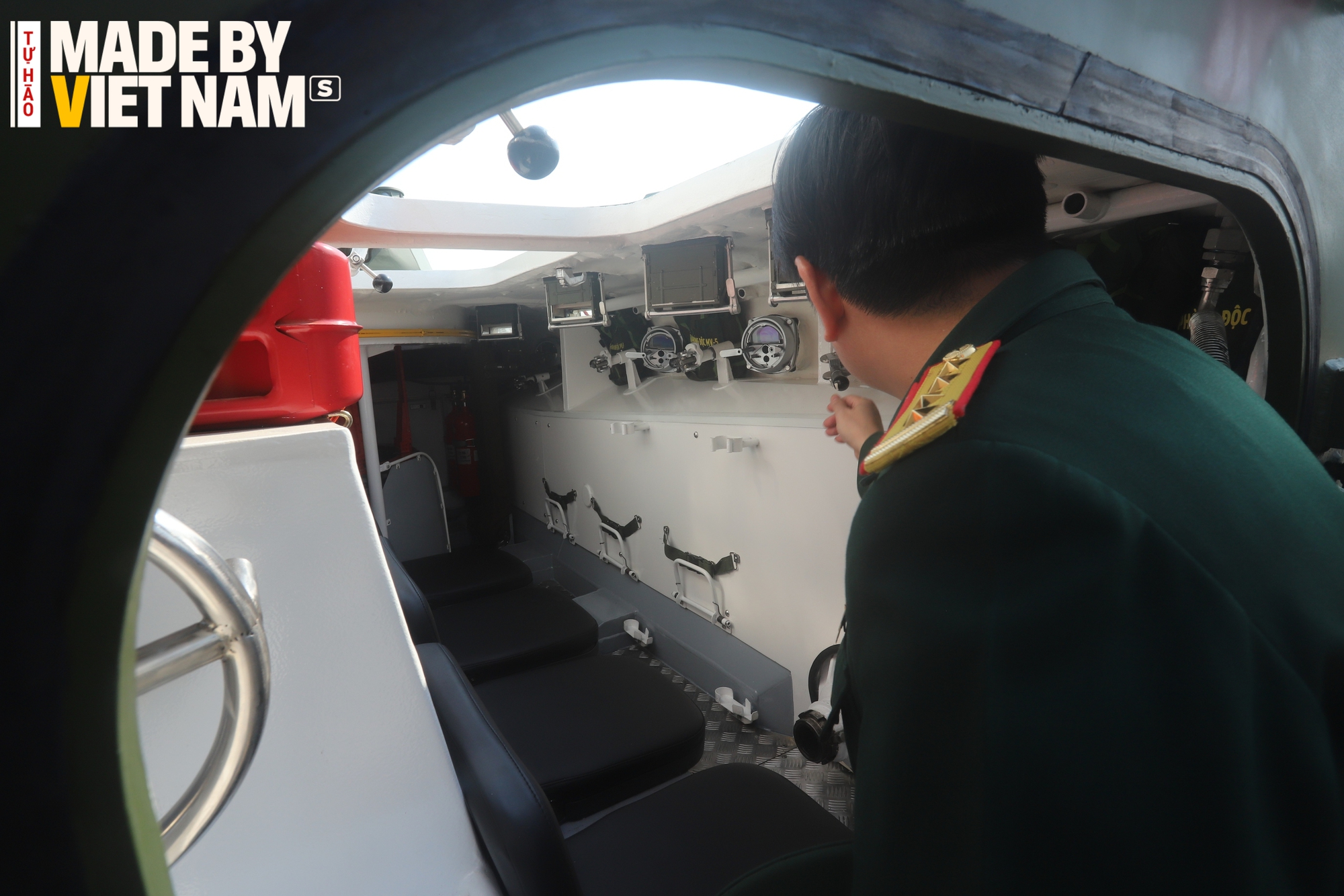
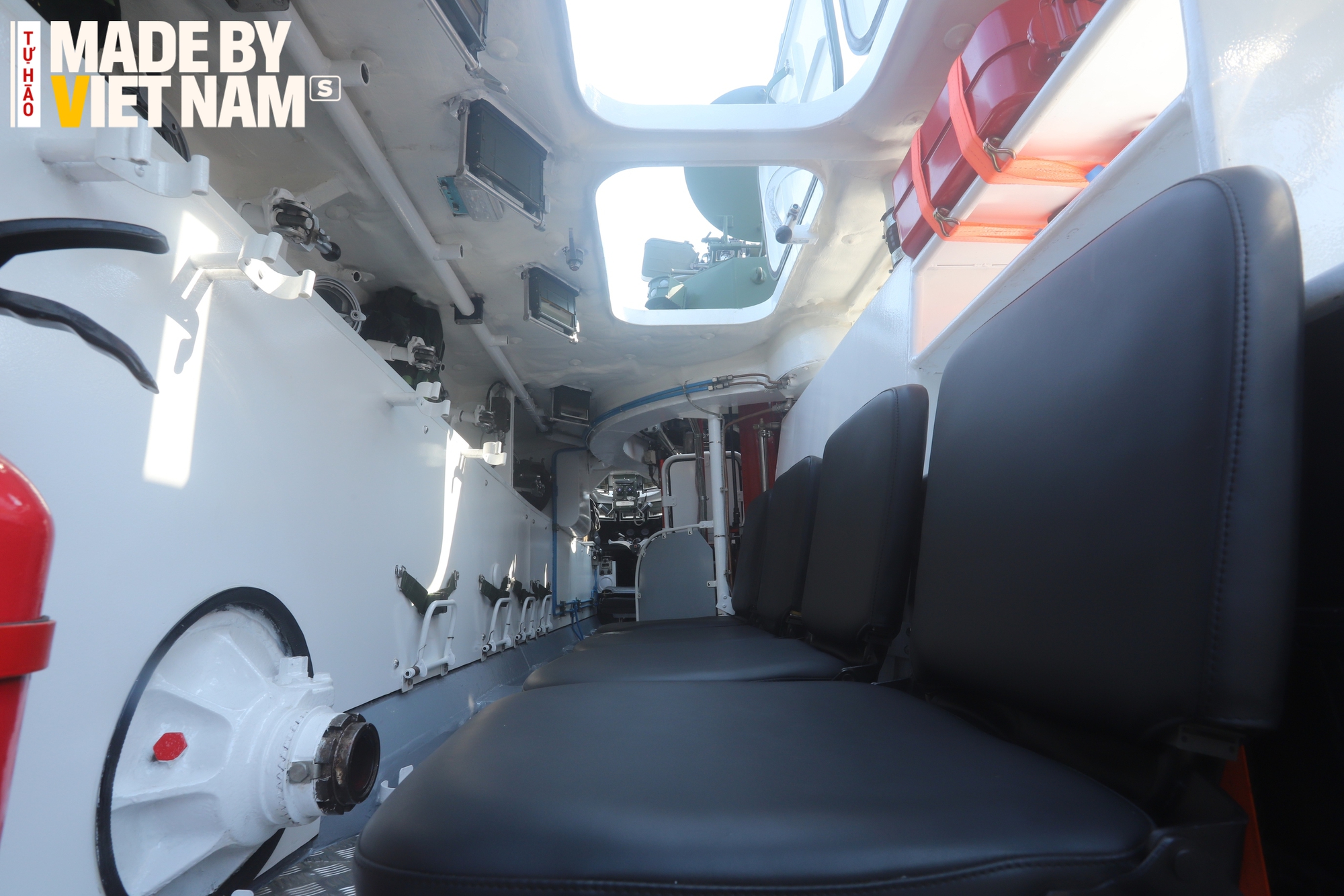
The XCB-01’s crew compartment. Photo: Thien Son
The XCB-01 is also equipped with smoke grenade launchers for camouflage and a built-in air conditioning system, ensuring crew and passenger comfort in Vietnam’s hot and humid climate. The vehicle accommodates a crew of three and can carry up to eight infantrymen.
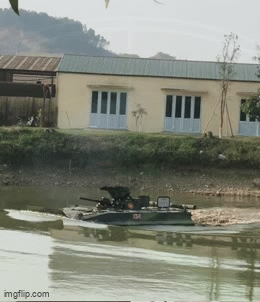
The XCB-01 infantry fighting vehicle undergoing swimming trials. Source: Youtube VIETNAMMILITARY
Vietnam’s XCB-01 Rivals the US’s M113 and Russia’s BMP-1
According to Senior Colonel Le Anh Son, Deputy Director of the Department of Technology Management (General Department of Defense Industry), the XCB-01 is comparable in size and weight to the US’s M113 armored personnel carrier and Russia’s BMP-1 infantry fighting vehicle.
When comparing these three vehicles, the XCB-01 holds its own in the three most critical aspects of an armored vehicle: mobility, weaponry, and protection.
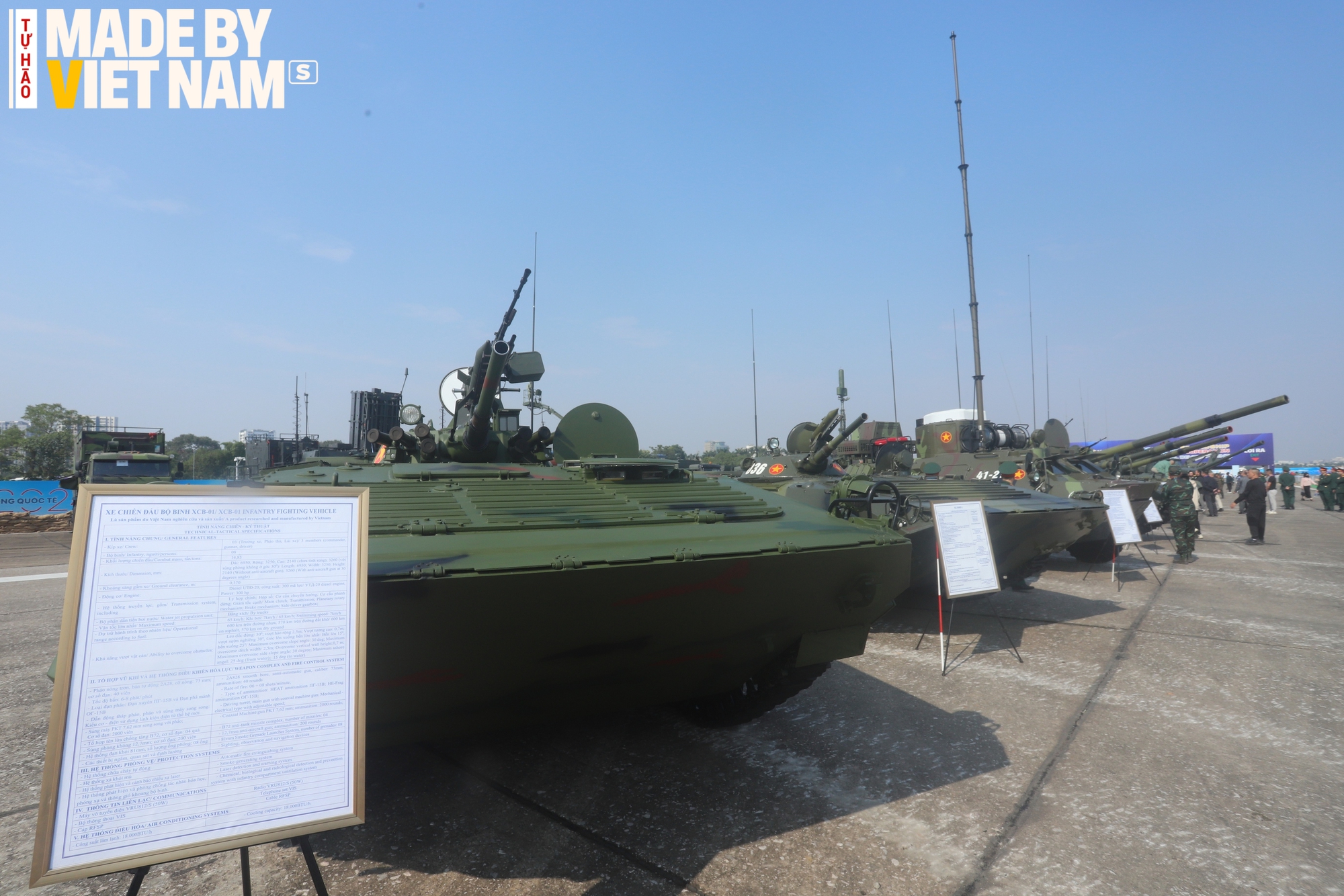
The XCB-01 on display at the 2024 Vietnam International Defense Exhibition. Photo: Thien Son
The US’s M113 Armored Personnel Carrier
The M113 armored personnel carrier was first produced in the late 1950s, and approximately 80,000 units have been manufactured since. It is not only used by the US Army but also by nearly 50 other countries and regions worldwide.
In terms of size, the M113 weighs 12.3 tons, with a length of 4.9m, a width of 2.7m, and a height of 2.5m. Its tracks are 38.1cm wide and use 15.24cm-wide gears, with 64 track links on the right side and 63 on the left.
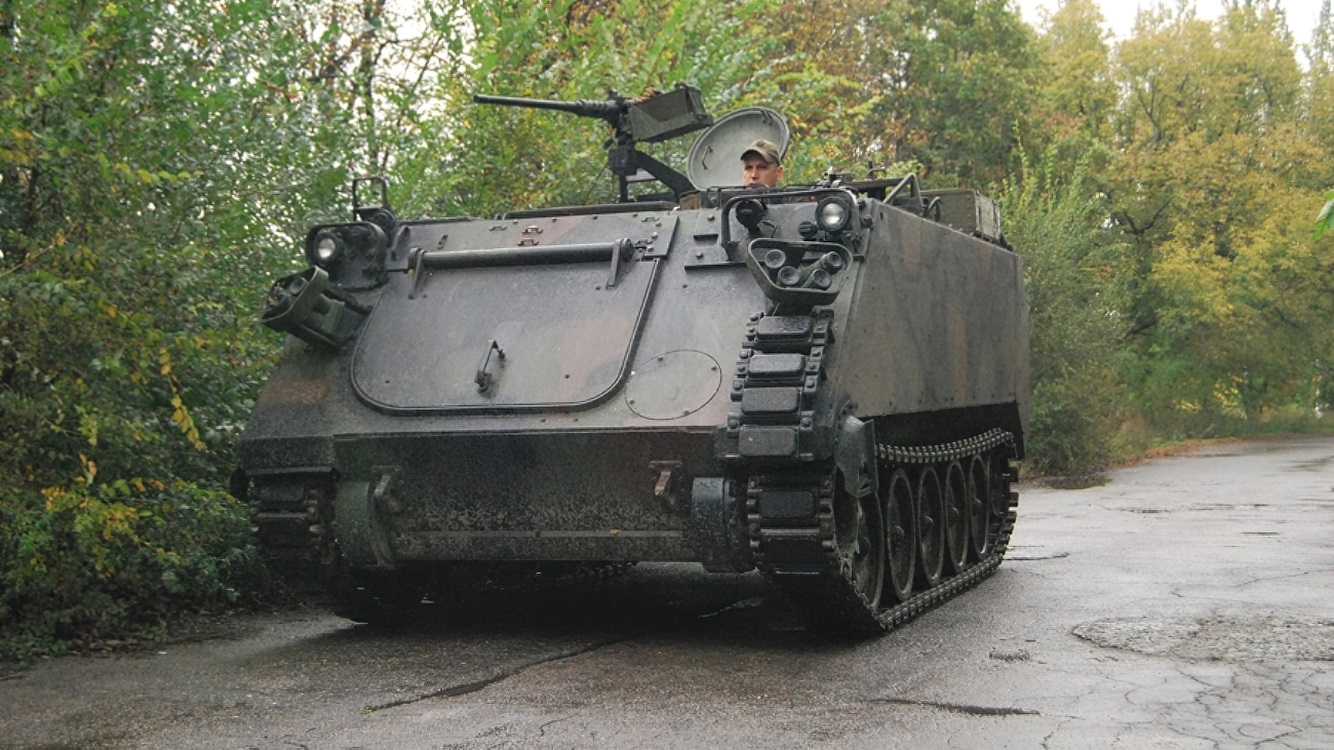
A close-up of the US’s M113. Photo: ArmyInform
Each track link is equipped with removable rubber pads, enhancing road grip and reducing noise during movement. The average lifespan of the tracks is 4,900km, occasionally reaching up to 14,400km.
The M113 can carry up to 11 troops. The driver’s compartment is located on the left front, with an entrance at the rear. The vehicle commander sits in the middle, and the remaining 10 troops can sit facing each other on two benches.
When not carrying troops, these benches can be folded to create a spacious cargo area of up to 6.54 cubic meters. A hydraulically operated ramp at the rear, along with another entrance, can be controlled from the driver’s compartment.
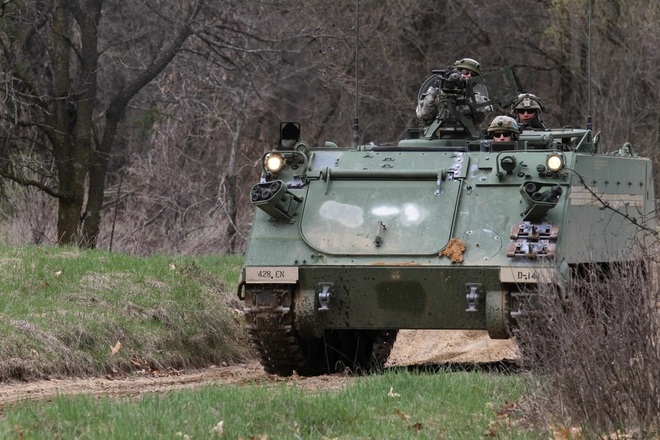

A close-up of the US’s M113. Photo: ArmyInform
The M113 can swim without prior preparation, requiring only the front shield to be raised for stability while floating. The vehicle’s movement is propelled by its tracks in the water. It can be transported by aircraft such as the C-5, C-17, C-130, and C-141.
Its weaponry includes a 12.7mm machine gun with an effective range of 1,800m and two 7.62mm medium machine guns that can fire to both sides of the vehicle. The M113 provides troops with mobile combat capabilities, allowing them to engage in battles from within the vehicle instead of waiting to reach their destination before dismounting.
Russia’s BMP-1 Infantry Fighting Vehicle
The BMP-1 infantry fighting vehicle weighs 13 tons and was the first IFV in the world, produced and deployed by the Soviet Union in 1966.
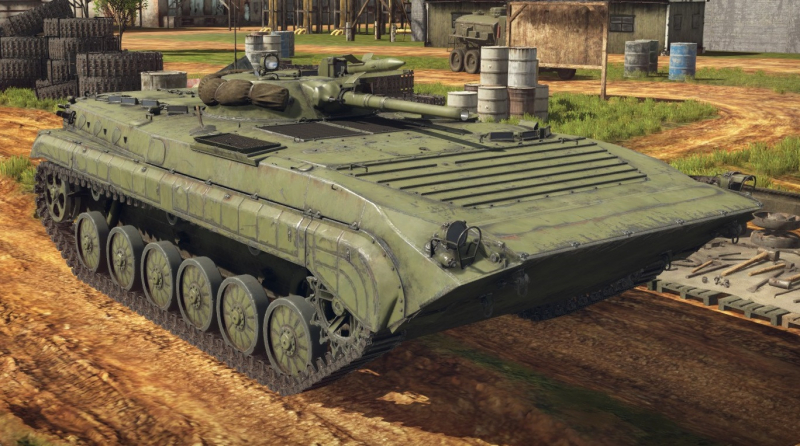
The BMP-1 infantry fighting vehicle. Photo: TASS
Protected by a hull made of rolled steel, the BMP-1 is equipped with a 73mm gun, a coaxial 7.62mm machine gun, and the Malyutka anti-tank missile launcher. It can move on water using the propulsion from its tracks.
Powered by a 300-horsepower diesel engine and gearbox, the BMP-1 features a driver’s seat at the front. A unique aspect of this vehicle compared to other Soviet-era tracked armored vehicles is its use of a steering wheel instead of levers for control.
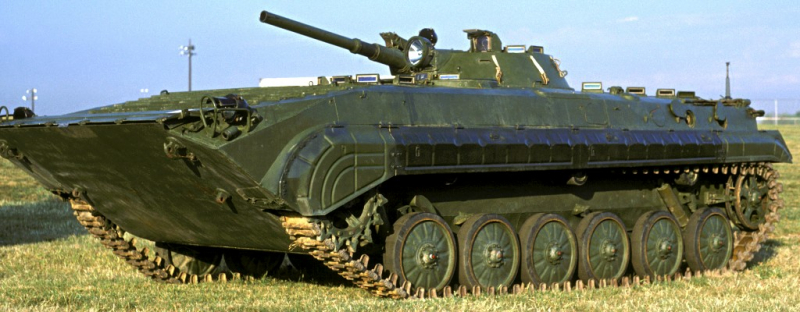
The BMP-1 infantry fighting vehicle. Photo: TASS
The center of the vehicle houses a small turret for the commander and gunner, while the rear accommodates up to eight troops, along with an auxiliary fuel tank. The troop compartment also has slots for the Strela-2 surface-to-air missile system. The BMP-1 is equipped with a system for defense against weapons of mass destruction.
This IFV was a significant success for the Soviet Union, with over 20,000 units produced from 1966 to 1983, and it demonstrated superior performance compared to conventional armored vehicles in combat.
The Economic Breakthrough of the Region with “The First River, The Peak”
Introducing [Province Name], a remarkable mountainous region boasting a comprehensive range of transportation options. This province stands out for its exceptional connectivity, offering a full suite of transport facilities that seamlessly link its interior, connect it with other provinces, and even extend to international destinations. It is a rare gem among mountainous areas, ensuring efficient and accessible movement for all.
The New Compulsory Rule: What Does the Inspection Certification Look Like for the Millions of Motorcycles Now Queueing Up?
“As of January 1st, 2025, a new era of vehicle certification will commence. This sample inspection certificate will be issued for motorcycles and scooters, marking a significant step forward in ensuring the safety and compliance of these vehicles. With this official document, owners can rest assured that their rides are up to the latest standards, bringing peace of mind and confidence to every journey.”















